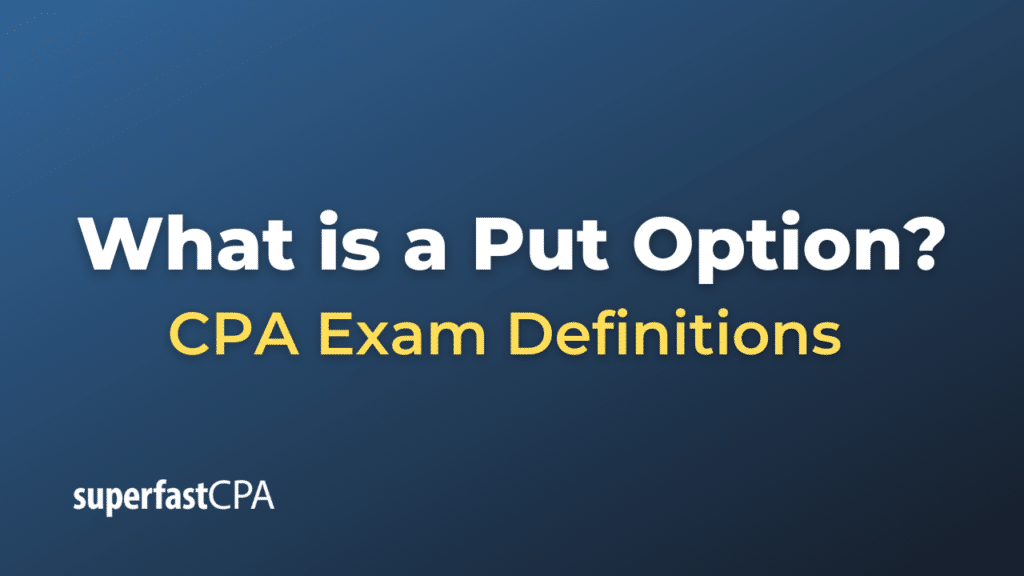Put Option
A put option is a contract that gives the option holder (buyer) the right, but not the obligation, to sell a specified amount of an underlying security at a specified price within a specified time period. The seller (writer) of the put option, on the other hand, is obligated to buy the asset if the buyer decides to exercise the option.
The specified price in the contract is known as the strike price, and the specified time period ends on the expiration date. The buyer of a put option believes that the underlying asset will drop below the exercise price before the expiration date. If this happens, the investor will be able to sell the asset for more than its current market price.
Here’s a simple example to illustrate how a put option works:
Suppose you believe that the stock of XYZ company, currently trading at $50, will decrease in value over the next month. So, you decide to buy a one-month put option with a strike price of $45 for a premium of $2.
- If the stock price drops to $40, you can exercise the put option, selling the stock for the strike price of $45. Considering you paid a $2 premium, your profit would be $3 per share ($45 – $40 – $2 = $3).
- If the stock price stays above $45, it wouldn’t make sense to exercise the option (you wouldn’t sell the stock for $45 when it’s worth more). In this case, you’d lose the $2 premium you paid for the option. It’s important to note that the loss is capped at the premium paid, making options a way to speculate on price changes with limited risk.
Please remember that options trading involves significant risk and isn’t appropriate for all investors. One should understand the risk involved and may consider consulting with a financial advisor before engaging in options trading.
Example of a Put Option
Let’s consider a more detailed example of a put option:
Imagine you own 100 shares of XYZ company, which you purchased at $50 per share for a total investment of $5000. Suppose the stock has done well and is currently trading at $70 per share. However, you believe that the company might face some difficulties in the upcoming months which may cause the stock price to fall.
To protect your investment, you could buy a put option that allows you to sell your shares at a specific price, known as the strike price, by a certain date. Let’s say you buy a put option with a strike price of $65 that expires in three months. You pay a premium of $5 per share, or $500 total, for this option.
Now, two scenarios can occur:
- The stock price falls below the strike price: Imagine the stock price drops to $60 per share. You can exercise your put option and sell your shares for the strike price of $65 per share. This is higher than the current market price of $60. So, even though the market price fell, you are able to limit your losses because of the put option.
- The stock price remains above the strike price: If the stock price stays above $65, say at $68, you would not exercise the put option because you can sell your shares in the market at a higher price ($68) than the strike price ($65). In this case, the put option expires worthless and you lose the premium of $5 per share or $500 total that you paid for the option.
So, the put option provided you with insurance against a significant drop in the stock price. In the first scenario, it helped limit your losses. In the second scenario, you lost the premium, but the option gave you peace of mind about your investment for three months.
Remember, options can be complex and involve significant risk. They are not suitable for every investor. Consider seeking advice from a financial advisor or broker before trading options.













